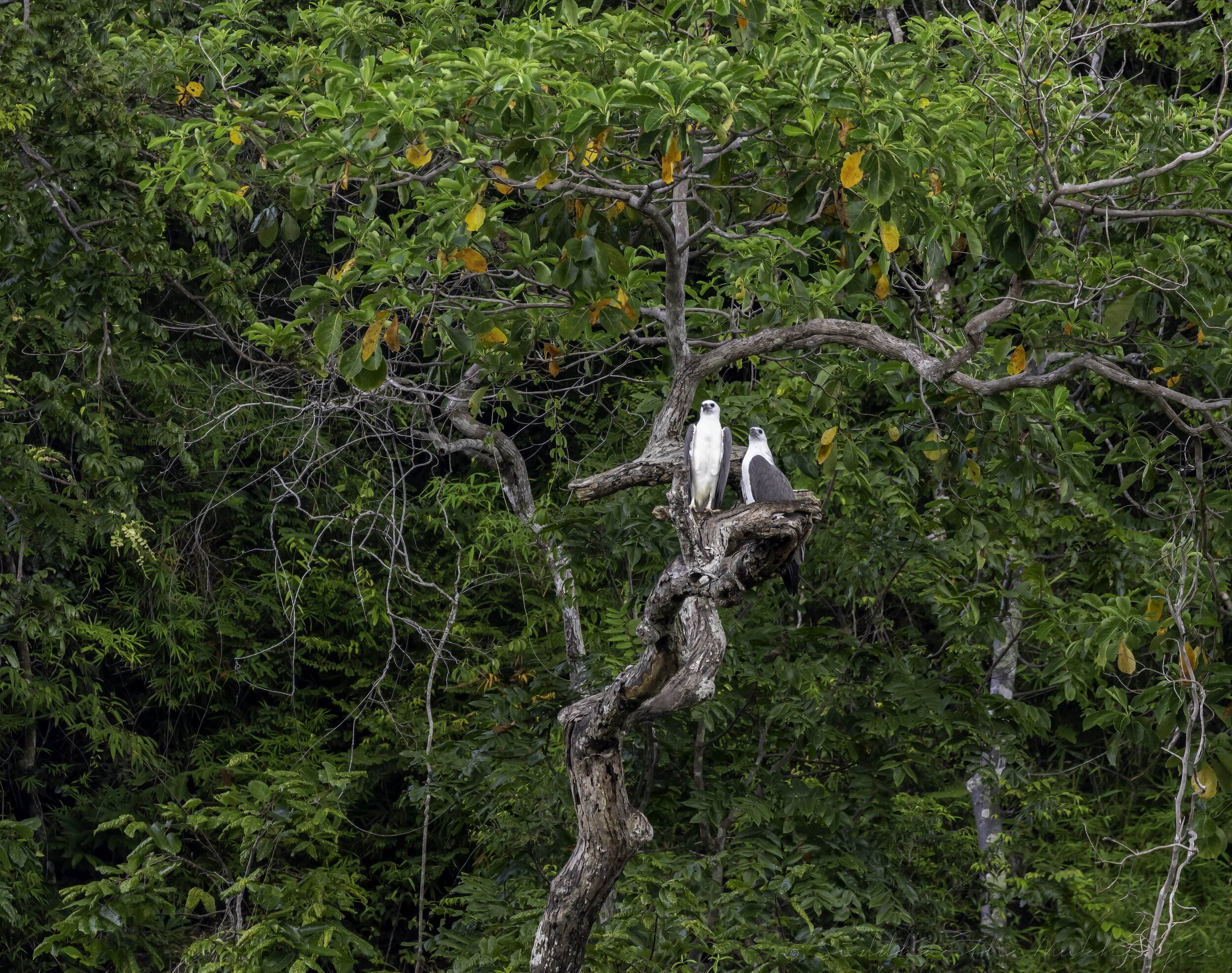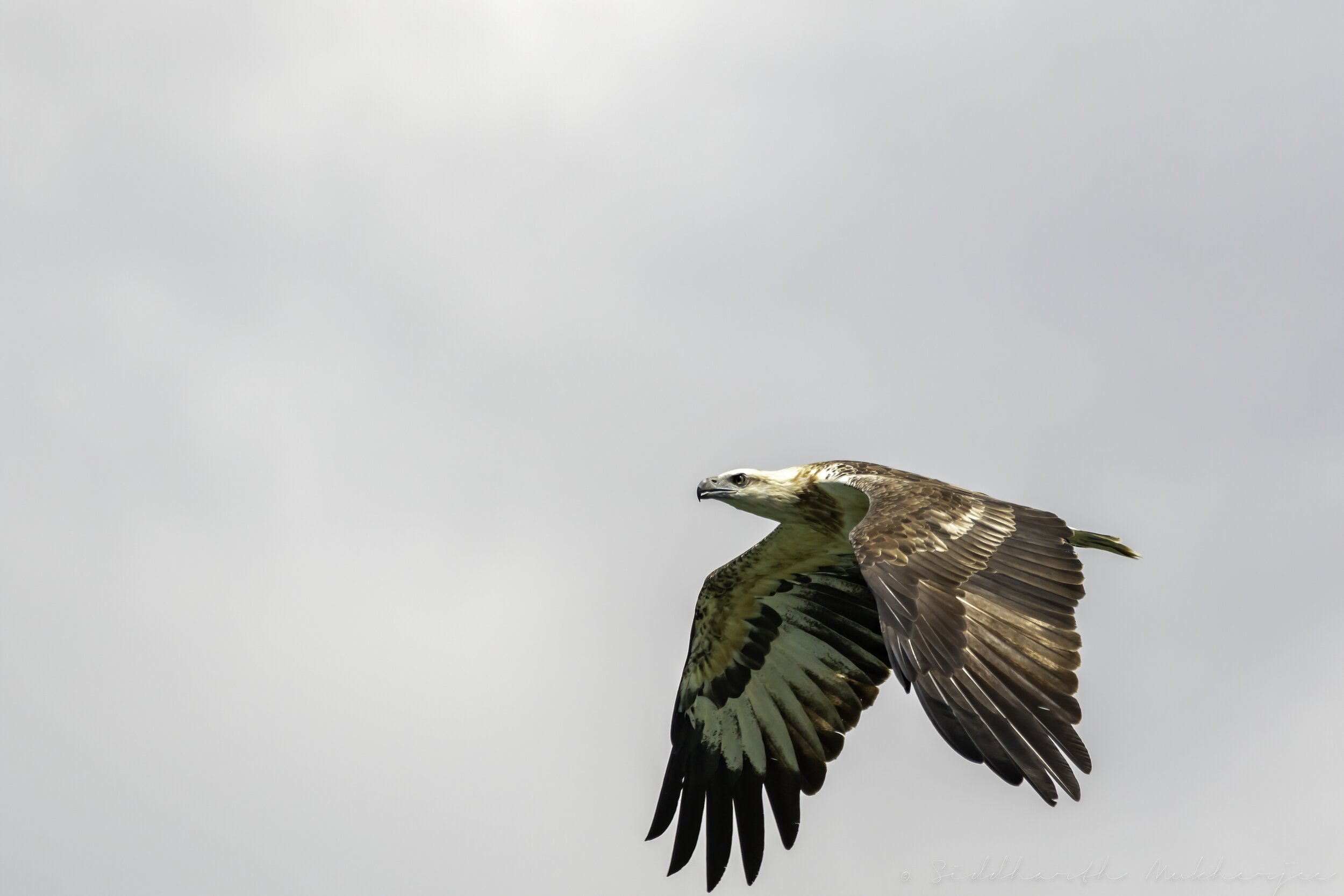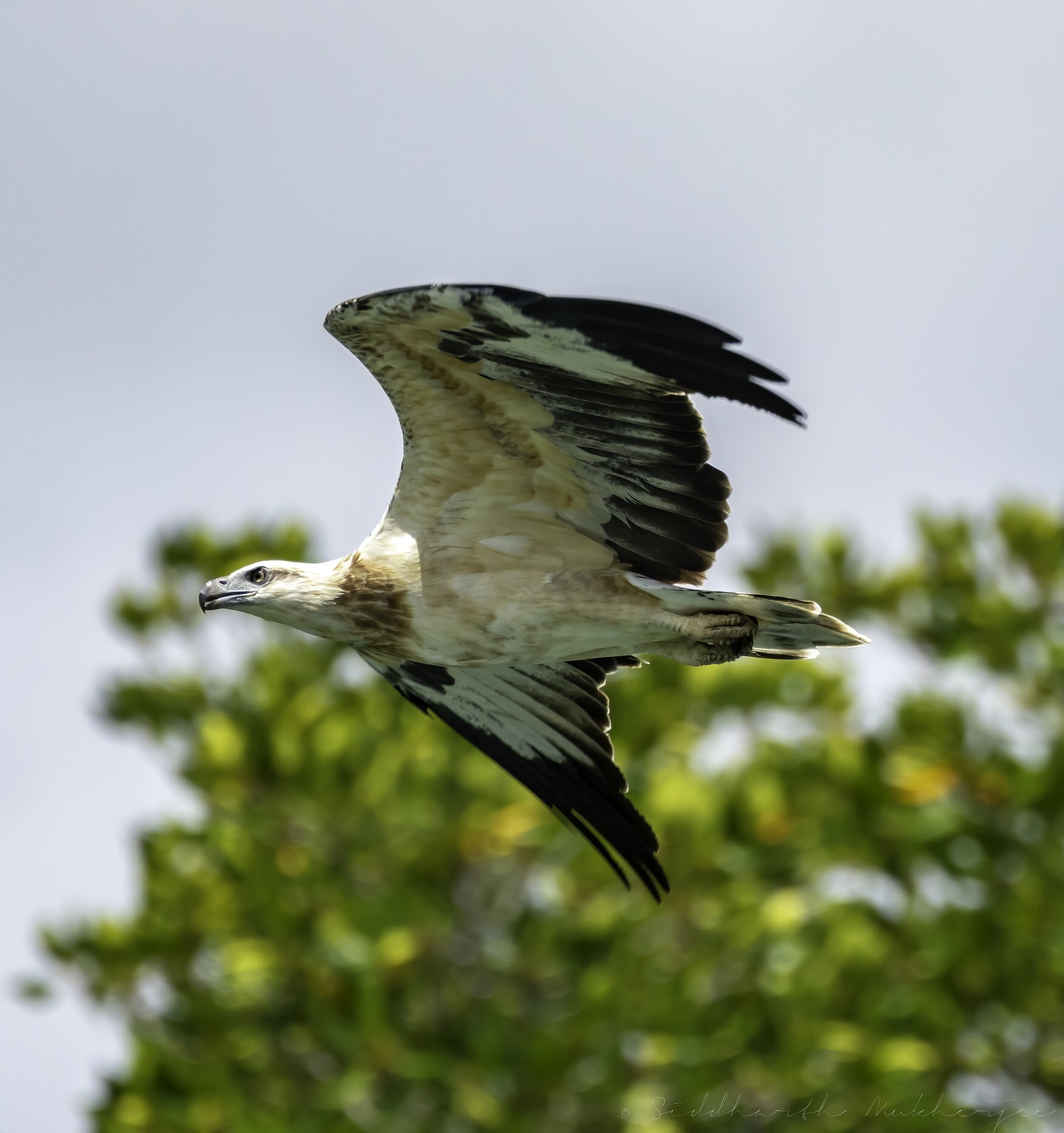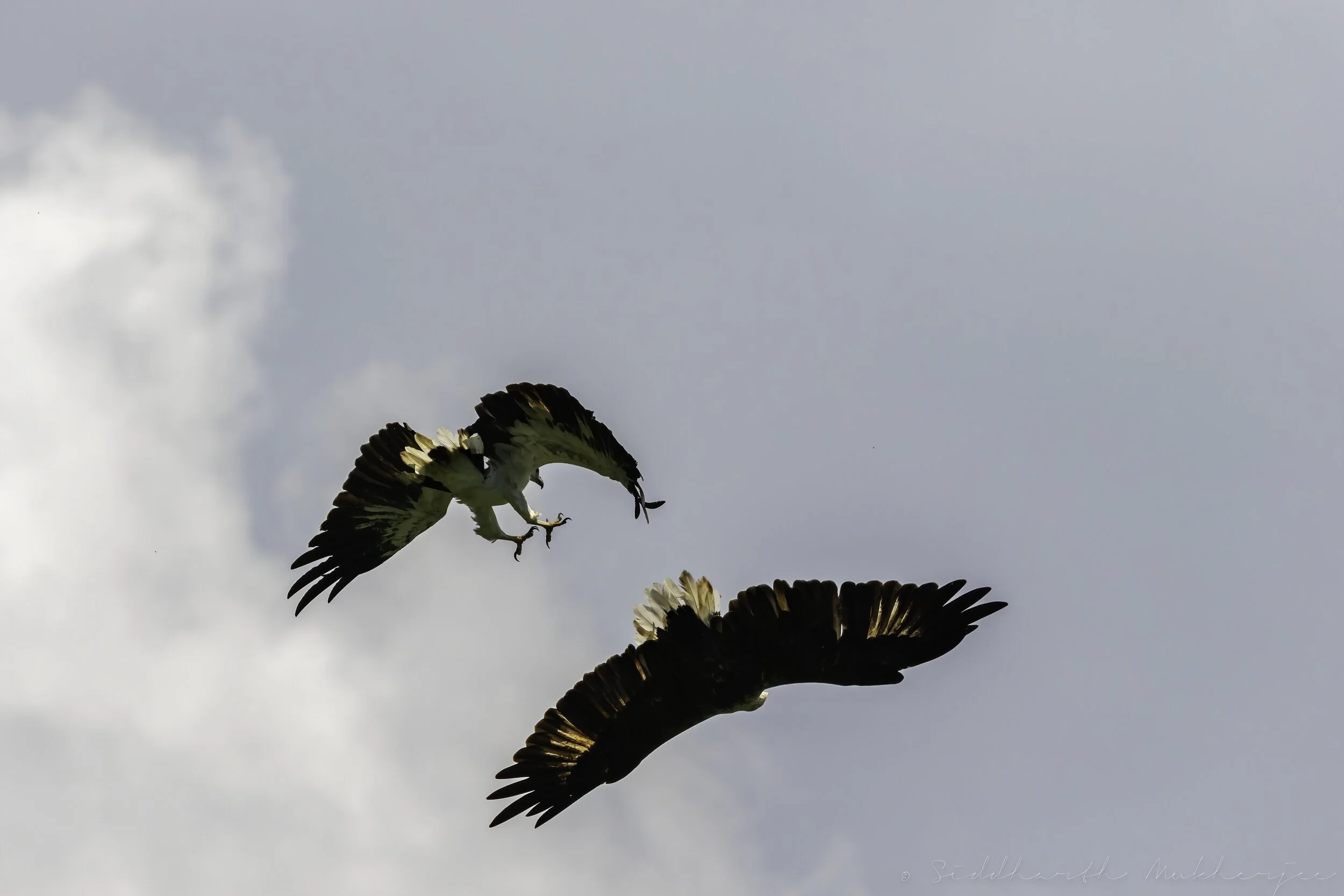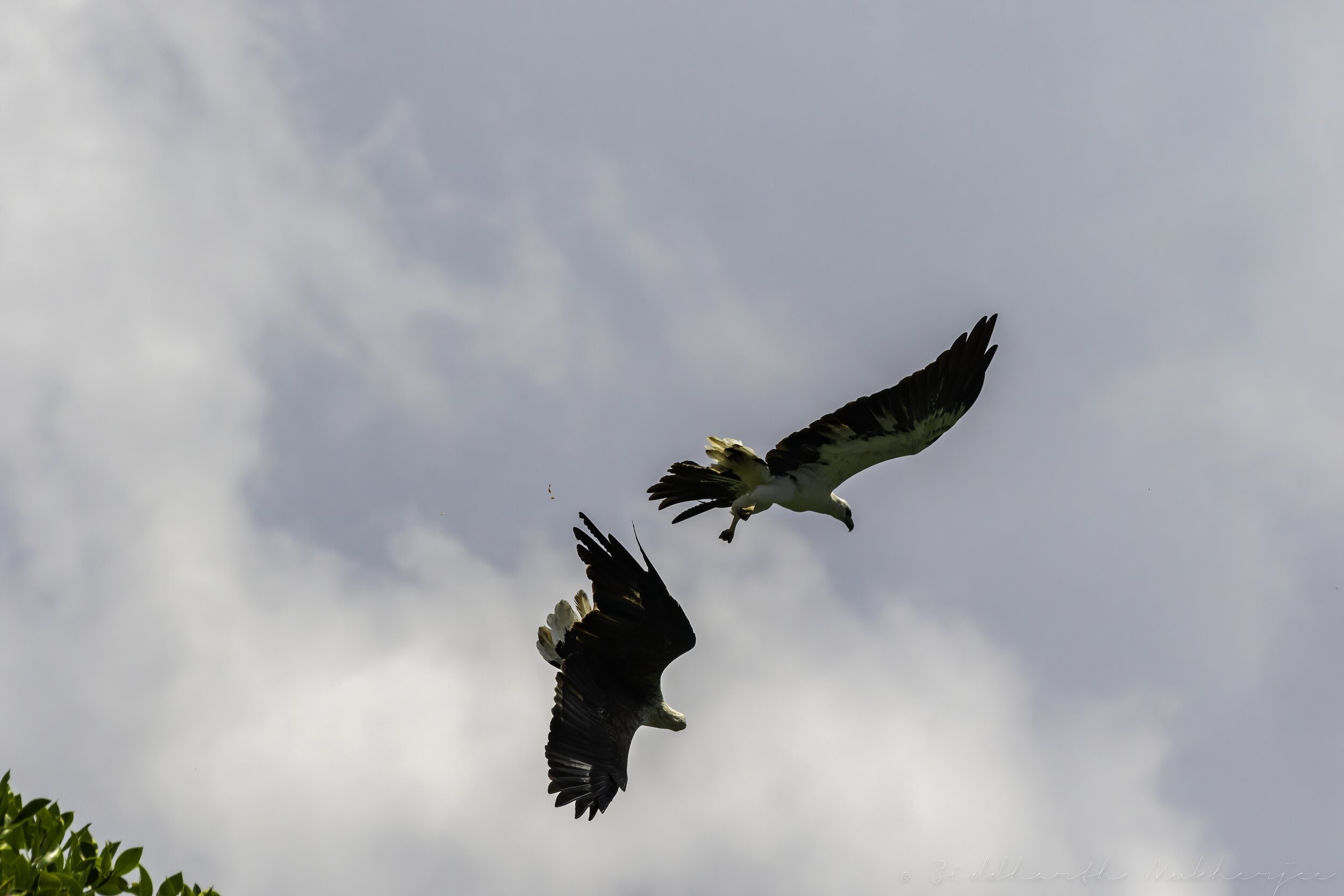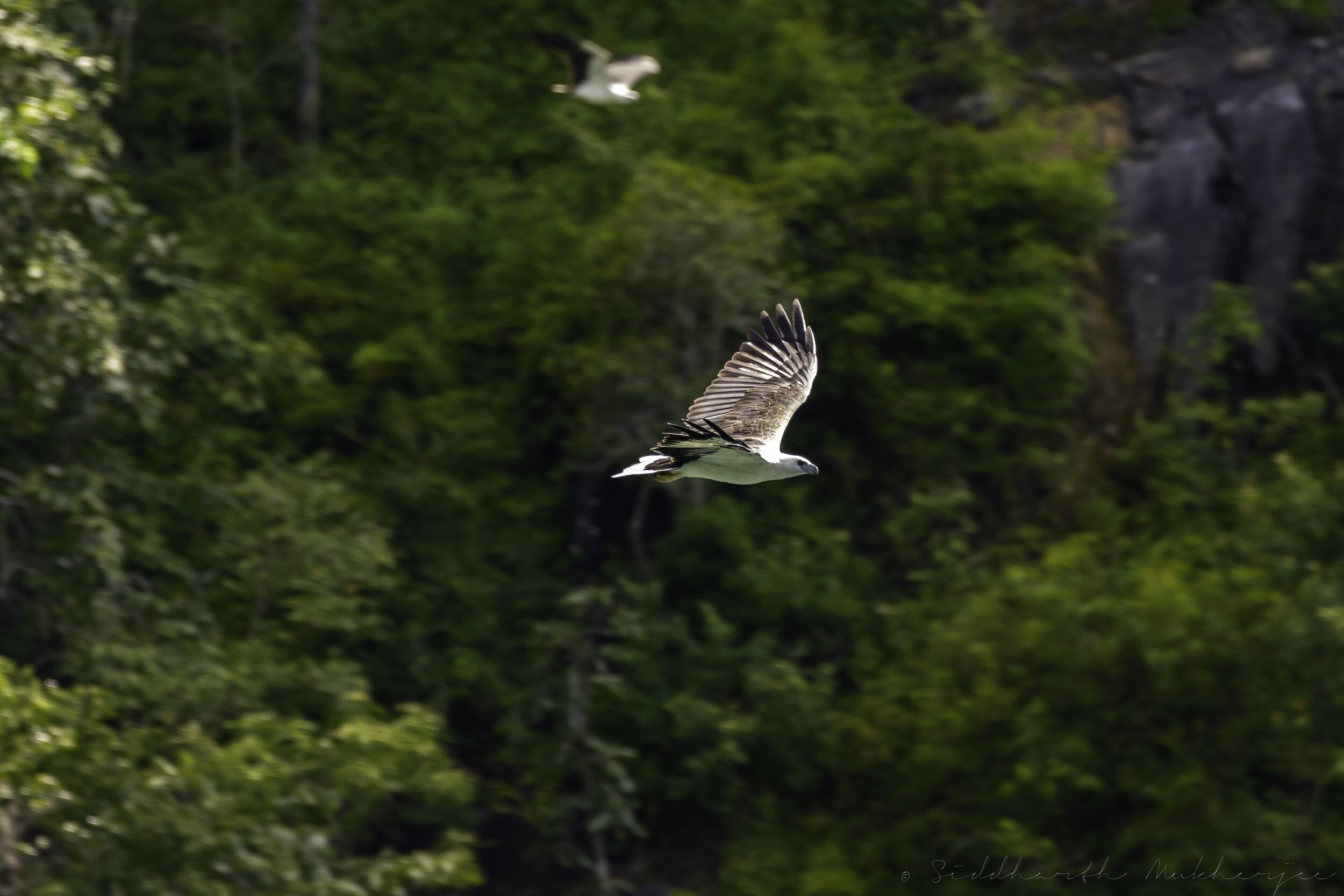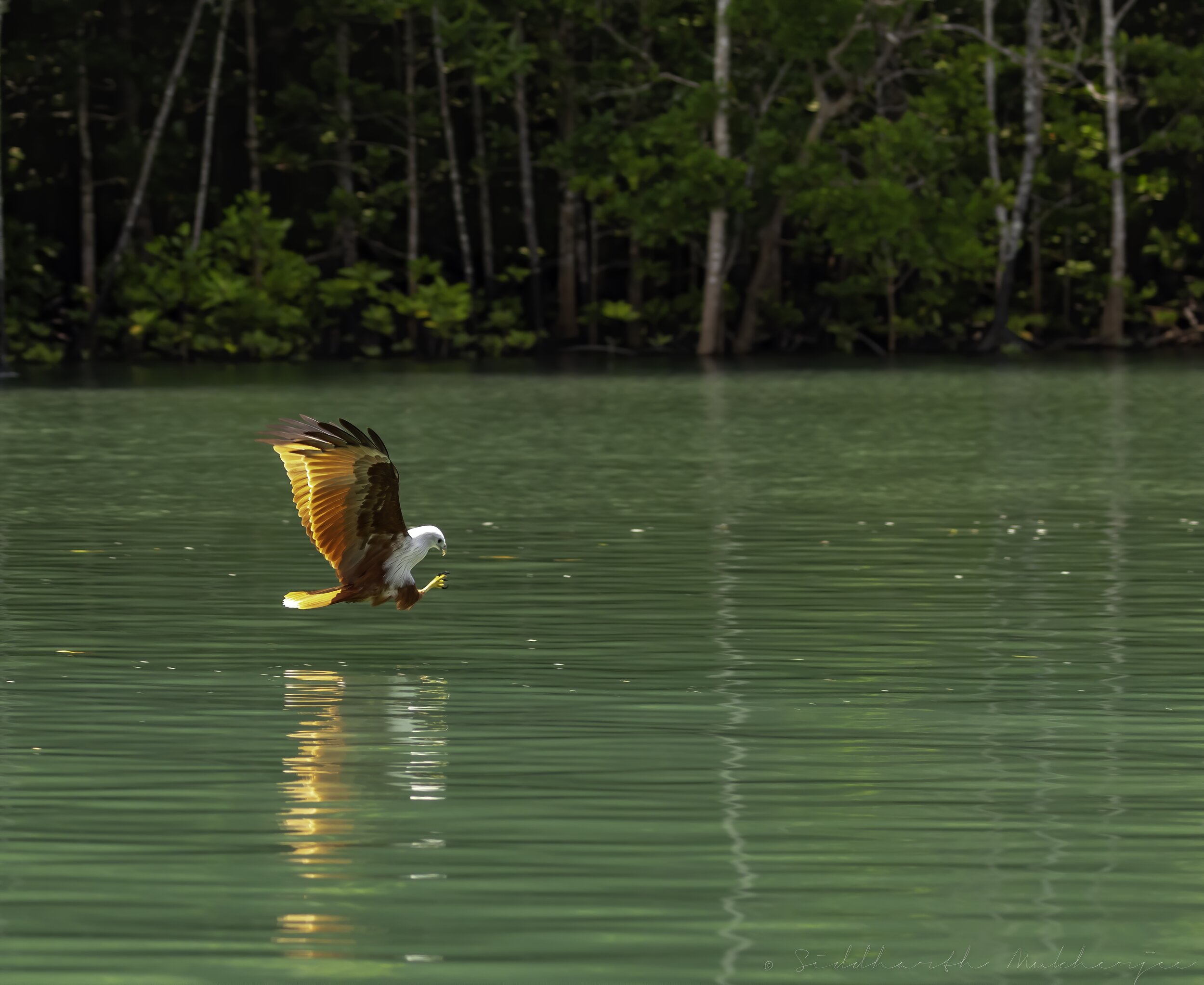White-bellied Sea Eagle
Haliaeetus leucogaster
Langkawi, Malaysia
After our sojourn in the Dois of Chiang Mai we went into the the emerald waters of Langkawi in Malaysia - the jewel of Kedah. Our area of interest was Sungai Kubang Badak and its estuary - first for the Brahminy Kite and this time for the White-bellied Sea Eagle.
Officially known as Langkawi, the Jewel of Kedah (in Malay: Langkawi Permata Kedah), is a district and an archipelago of 99 islands (plus five small islands visible only at low tide) in the Malacca Straits. some 30 km off the coast of northwestern Malaysia. Surrounded by turquoise sea, the interior of the main island is a mixture of picturesque paddy fields and jungle-clad hills while the shoreline is fringed by powder-fine sand, swaying coconut trees and dense mangroves. The islands are a part of the state of Kedah, which is adjacent to the Thai border; the islands are a few kilometres south of Ko Tarutao. On 15 July 2008, the then-sultan of Kedah, Abdul Halim Mu'adzam Shah, conferred the title of Langkawi Permata Kedah (meaning 'Langkawi, the Jewel of Kedah') upon the island as part of his golden jubilee as an affirmation of Kedah's ownership over the island.
The island of Langkawi was recorded in history by various travellers to the region. It was called Lóngyápútí in the 14th century by the Yuan dynasty traveller Wang Dayuan. When the Ming dynasty admiral Zheng He visited the region, the island was marked as Lóngyájiāoyǐ, on his map. In the 15th century, it was known to the Acehnese as Pulau Lada ('Pepper Island'). In 1691, the French general Augustin de Beaulieu recorded going to the island of "Lancahui" (Langkawi) to buy pepper, and de Beaulieu was required to obtain a license from Kedah's heir apparent then in Perlis before the penghulu or chief of Langkawi would sell pepper to him. The name Langkawi is thought to have existed by the early 15th century, although in the 16th century the island of Langkawi was also marked on maps variously as Langa, Langka, Lansura, and Langapura. There are many suggestions for the origin of the name of Langkawi. According to one interpretation, Langkawi means island of the reddish-brown eagle, a Brahminy Kite in colloquial Malay. The Malay word for eagle is helang (colloquially shortened to lang), and kawi is a red stone used as a chalk to mark goods. This interpretation was used to create the landmark sculpture of an eagle as the symbol of Langkawi at Dataran Helang (Eagle Square) in Kuah, the largest town on the island.
Some believed that Langkawi is the same as, or related to, the Lanka or Langkapuri mentioned in the epic Ramayana as the city of King Ravana. This ancient name Lanka (or Lankapura and Lankapuri) is found in Indian literature from an early period although the identification of the original Lanka is not certain. Puri or puram in Sanskrit means a town or city. The name Langkawi is also thought to be related to Langkasuka, an old kingdom believed to have links with Kedah. Some also thought that Langkawi means "many beautiful islands", langka being a Sanskrit word meaning "beautiful" while wi means "many".
Our area of interest however, is in the northwest of the main island which is about 25 kilometres (16 mi) from north to south and slightly more from east to west. The coastal areas consist of flat, alluvial plains punctuated with limestone ridges. Two-thirds of the island is dominated by forest-covered mountains, hills, and natural vegetation. On 1 June 2007, Langkawi Island was given a World Geopark status by UNESCO. Three of its main conservation areas in Langkawi Geopark are Machincang Cambrian Geoforest Park, Kilim Karst Geoforest Park, and Dayang Bunting Marble Geoforest park (Island of the Pregnant Maiden Lake). These three parks are the most popular tourism area within Langkawi Geopark. In 2014, UNESCO issued a "yellow card" warning threatening the status of the Geopark.
The island's oldest geological formation, the Machinchang Formation, was the first part of Southeast Asia to rise from the seabed in the Cambrian more than half a billion years ago. The oldest part of the formation is observable at Teluk Datai to the northwest of the island, where the exposed outcrop consists of mainly sandstone (quartzite) in the upper parts and shale and mudstone in the lower parts of the sequence. The other known example, the Jerai Formation, emerges near the west coast of Kedah on the mainland (peninsula). Geologically, all these rocks are in the Western Belt of peninsular Malaysia, which is thought to be part of the Shan–Thai Terrane.
‡‡‡‡‡
White-bellied Sea Eagle
The white-bellied sea eagle (Haliaeetus leucogaster), also known as the white-breasted sea eagle, is a large diurnal bird of prey in the family Accipitridae. Originally described by Johann Friedrich Gmelin in 1788, it is closely related to Sanford's sea eagle of the Solomon Islands, and the two are considered a superspecies.
A distinctive bird, the adult white-bellied sea eagle has a white head, breast, under-wing coverts and tail. The upper parts are grey and the black under-wing flight feathers contrast with the white coverts. The tail is short and wedge-shaped as in all Haliaeetus species. Like many raptors, the female is slightly larger than the male, and can measure up to 90 cm (35 in) long with a wingspan of up to 2.2 m (7.2 ft), and weigh 4.5 kg. Immature birds have brown plumage, which is gradually replaced by white until the age of five or six years. The call is a loud goose-like honking. I have here photos of both the adults in their full plumage and also of the juveniles and immatures.
Resident from India and Sri Lanka through Southeast Asia to Australia on coasts and major waterways, the white-bellied sea eagle breeds and hunts near water, and fish form around half of its diet. Opportunistic, it consumes carrion and a wide variety of animals. Although rated as Least Concern globally, it has declined in parts of southeast Asia such as Thailand, and southeastern Australia. It is ranked as Threatened in Victoria and Vulnerable in South Australia and Tasmania. Human disturbance to its habitat is the main threat, both from direct human activity near nests which impacts on breeding success, and from removal of suitable trees for nesting. The white-bellied sea eagle is revered by indigenous people in many parts of Australia, and is the subject of various folk tales throughout its range.
The white-bellied sea eagle has a white head, rump and underparts, and dark or slate-grey back and wings. In flight, the black flight feathers on the wings are easily seen when the bird is viewed from below. The large, hooked bill is a leaden blue-grey with a darker tip, and the irides are dark brown. The cere is also lead grey. The legs and feet are yellow or grey, with long black talons (claws). Unlike those of eagles of the genus Aquila, the legs are not feathered. The sexes are similar. Males are 66–80 cm (26–31 in) long and weigh 1.8–3 kg. Females are slightly larger, at 80–90 cm (31–35 in) and 2.5–4.5 kg. The wingspan ranges from 1.78 to 2.2 m (5.8 to 7.2 ft). A 2004 study on 37 birds from Australia and Papua New Guinea (3 °S to 50 °S) found that birds could be sexed reliably on size, and that birds from latitudes further south were larger than those from the north. There is no seasonal variation in plumage. The moulting pattern of the white-bellied sea eagle is poorly known. It appears to take longer than a year to complete, and can be interrupted and later resumed from the point of interruption.
The wings are modified when gliding so that they rise from the body at an angle, but are closer to horizontal further along the wingspan. In silhouette, the comparatively long neck, head and beak stick out from the front almost as far as the tail does behind. For active flight, the white-bellied sea eagle alternates strong deep wing-beats with short periods of gliding.
A young white-bellied sea eagle in its first year is predominantly brown, with pale cream-streaked plumage on their head, neck, nape and rump areas. The plumage becomes more infiltrated with white until it acquires the complete adult plumage by the fourth or fifth year. The species breeds from around six years of age onwards. The lifespan is thought to be around 30 years.
The loud goose-like honking call is a familiar sound, particularly during the breeding season; pairs often honk in unison, and often carry on for some time when perched. The male's call is higher-pitched and more rapid than that of the female. Australian naturalist David Fleay observed that the call is among the loudest and furthest-carrying of all Australian bird calls, in stark contrast to the relatively quiet calls of the wedge-tailed eagle.
Adult white-bellied sea eagles are unmistakable and unlikely to be confused with any other bird. Immature birds can be confused with wedge-tailed eagles. However, the plumage of the latter is darker, the tail longer, and the legs feathered. They might also be confused with the black-breasted buzzard (Hamirostra melanosternon), but this species is much smaller, has white patches on the wings, and has a more undulating flight. In India, the Egyptian vulture has white plumage, but is smaller and has a whiter back and wings. The white tail of the white-bellied sea eagle in flight distinguishes it from other species of large eagles. In the Philippines, it can be confused with the Philippine eagle, which can be distinguished by its crest; immature white-bellied sea eagles resemble immature grey-headed fish eagles, but can be identified by their more wholly dark brown underparts and flight feathers, and wedge-shaped tail.
The white-bellied sea eagle is found regularly from Mumbai (sometimes north to Gujarat, and in the past in the Lakshadweep Islands) eastwards in India, Bangladesh, and Sri Lanka in southern Asia, through all of coastal Southeast Asia including Burma, Thailand, Malaysia, Indonesia, Indochina, the main and offshore islands of the Philippines, and southern China including Hong Kong, Hainan and Fuzhou, eastwards through New Guinea and the Bismarck Archipelago, and Australia. In the northern Solomons it is restricted to Nissan Island, and replaced elsewhere by Sanford's sea eagle. In Victoria, where it is otherwise scarce, it is locally more common at Corner Inlet and Gippsland Lakes. Similarly in South Australia, it is most abundant along the north coast of Kangaroo Island. The range extends to the islands of Bass Strait and Tasmania, and it is thought able to move between the islands and the mainland. There is one unconfirmed record from Lord Howe Island and several from New Zealand.
They are a common sight in coastal areas, but may also be seen well inland (It is reportedly seen at the Panna Tiger Reserve in central India, nearly 1,000 km (621 mi) away from the sea shore) The white-bellied sea eagle is generally sedentary and territorial, although it may travel long distances. They have been reported travelling upriver to hunt for flying foxes (Pteropus). Populations in inland Australia move around as inland bodies of water appear and then dry up. In one instance, a pair came to breed at Lake Albacutya in northwest Victoria after the lake had been empty for 30 years. The species is easily disturbed by humans, especially when nesting, and may desert nesting sites as a result. It is found in greater numbers in areas with little or no human impact or interference.
The white-bellied sea eagle is an opportunistic carnivore and consumes a wide variety of animal prey, including carrion. It often catches a fish by flying low over the water and grasping it in its talons. It prepares for the strike by holding its feet far forward (almost under its chin) and then strikes backwards while simultaneously beating its wings to lift upwards. Generally only one foot is used to seize prey. The white-bellied sea eagle may also dive at a 45 degree angle from its perch and briefly submerge to catch fish near the water surface. While hunting over water on sunny days, it often flies directly into the sun or at right angles to it, seemingly to avoid casting shadows over the water and hence alerting potential prey.
The white-bellied sea eagle was important to different tribes of indigenous people across Australia. The guardian animal of the Wreck Bay aboriginal community, it is also the official emblem of the Booderee National Park and Botanic Gardens in the Jervis Bay Territory. The community considered localities around Booderee National Park to be connected with it. A local Sydney name was gulbi, and the bird was the totem of Colebee, the late 18th century indigenous leader of the Cadigal people. The white-bellied sea eagle is important to the Mak Mak people of the floodplains to the southwest of Darwin in the northern Territory, who recognised its connection with "good country". It is their totem and integrally connected to their land. The term Mak Mak is their name for both the species and themselves. The Umbrawarra Gorge Nature Park was a Dreaming site of the bird, in this area known as Kuna-ngarrk-ngarrk. It was similarly symbolic to the Tasmanian indigenous people—Nairanaa was one name used there.
Known as Manulab to the people of Nissan Island, the white-bellied sea eagle is considered special and killing it is forbidden. Its calls at night are said to foretell danger, and seeing a group of calling eagles flying overhead is a sign that someone has died. Local Malay folk tales tell of the white-bellied sea eagle screaming to warn the shellfish of the turning of tides, and a local name burung hamba siput translates as "slave of the shellfish". Called Kaulo in the recently extinct Aka-Bo language, the white-bellied sea eagle was held to be the ancestor of all birds in one Andaman Islands folk tale. On the Maharashtra coast, their name is kakan and its call is said to indicate the presence of fish in the sea. They sometimes nest on coconut trees. Owners of the trees destroy the nest to avoid attacks when harvesting the coconuts.
‡‡‡‡‡
Deconstructing the dive of a Juvenile White-bellied Sea Eagle
Zoom in for the details
‡‡‡‡‡
Related Posts


